Best budget mic preamps 2025: Upgrade your studio setup for less
Add vibe to your vocals and sheen to your instrument sounds with our selection of the best budget mic preamps available today
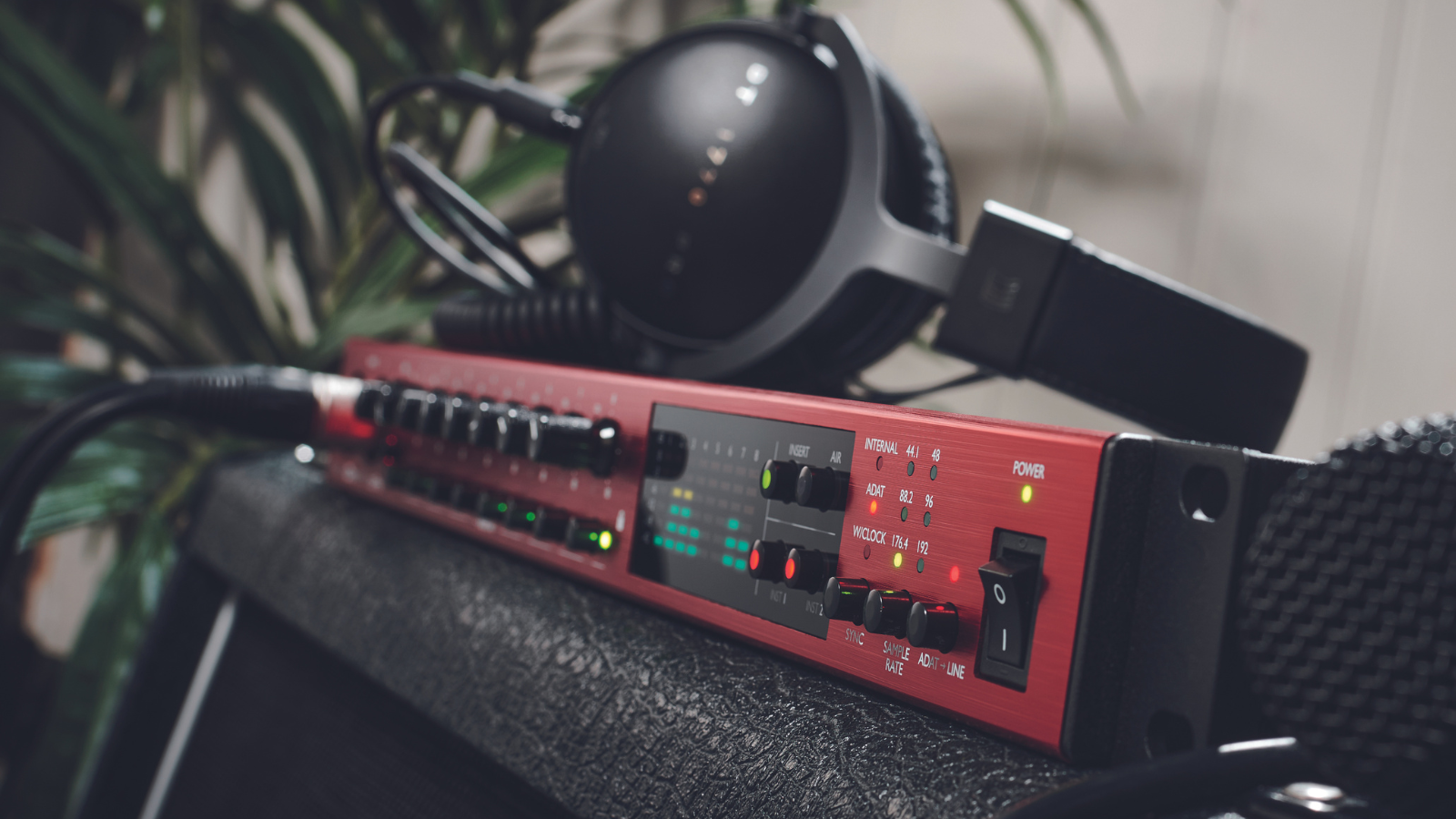
So you’ve decided you want to up the stakes of your home studio and jump into the wide world of mic preamps? Perhaps you’ve outgrown those built into your audio interface and need more inputs, or you’re looking for something to specifically sweeten those vocal takes with a unique character, less noise, or more gain. Whichever it is, we’ve rounded up the best budget mic preamps for your studio space whether you’re recording solo takes or a full band.
The majority of traditional recording studios use dedicated mic pres, which along with the person behind the desk, is part of what sets them apart from the sound of your average home studio. Your audio interface already has mic preamps built into it, but the usual reason producers and engineers go for a dedicated mic preamp is to make certain elements of the mix shine. As well as adding much-needed gain, a great mic preamp will impart its own character on a recording, adding that vibe you didn't know you were missing.
In terms of mic preamps when we say ‘budget’, it’s a relative term. Top-quality mic preamps in pro studios cost well into the thousands, but you don’t need to spend quite so much to see a drastic difference in your recording quality. Here, we’ve rounded up a selection of the best budget mic preamps, whether you’re recording from home or looking for a new bit of gear for your full-fledged studio space.
If you’re buying for the first time, we’d highly recommend you check out our buying advice section for more information. If you already know roughly what you’re looking for, then keep scrolling to see our top picks.
Best budget mic preamps: Our top picks
If you want the best possible sound without spending over a grand, then the Focusrite ISA One will dramatically improve your recording quality. Based on the legendary ISA preamp that has been in top studios the world over, this desktop-friendly version will make even budget-range mics sound decidedly better. Pair that with an additional DI feature and you’ve got a seriously powerful tool for the home studio.
On a tighter budget? Well, then it’s going to be hard to look past the DBX 286s, especially for vocals. With a built-in de-esser, enhancer, compressor, and expander, not only is this a brilliant mic pre but a full channel strip for comparatively little money. It’s also got a line input so you can run guitars, bass, synths, and many other instruments through it.
Finally, if you want more inputs but are stuck for cash, have a look at the Behringer ADA8200. Improved Midas preamps provide a quieter and more neutral performance, making it great for a variety of different uses. Ignore the (often undeserved) hate for Behringer products, this is a brilliant option for someone who needs to multi-mic drums or record bands on a budget.
Best budget mic preamps: Product guide
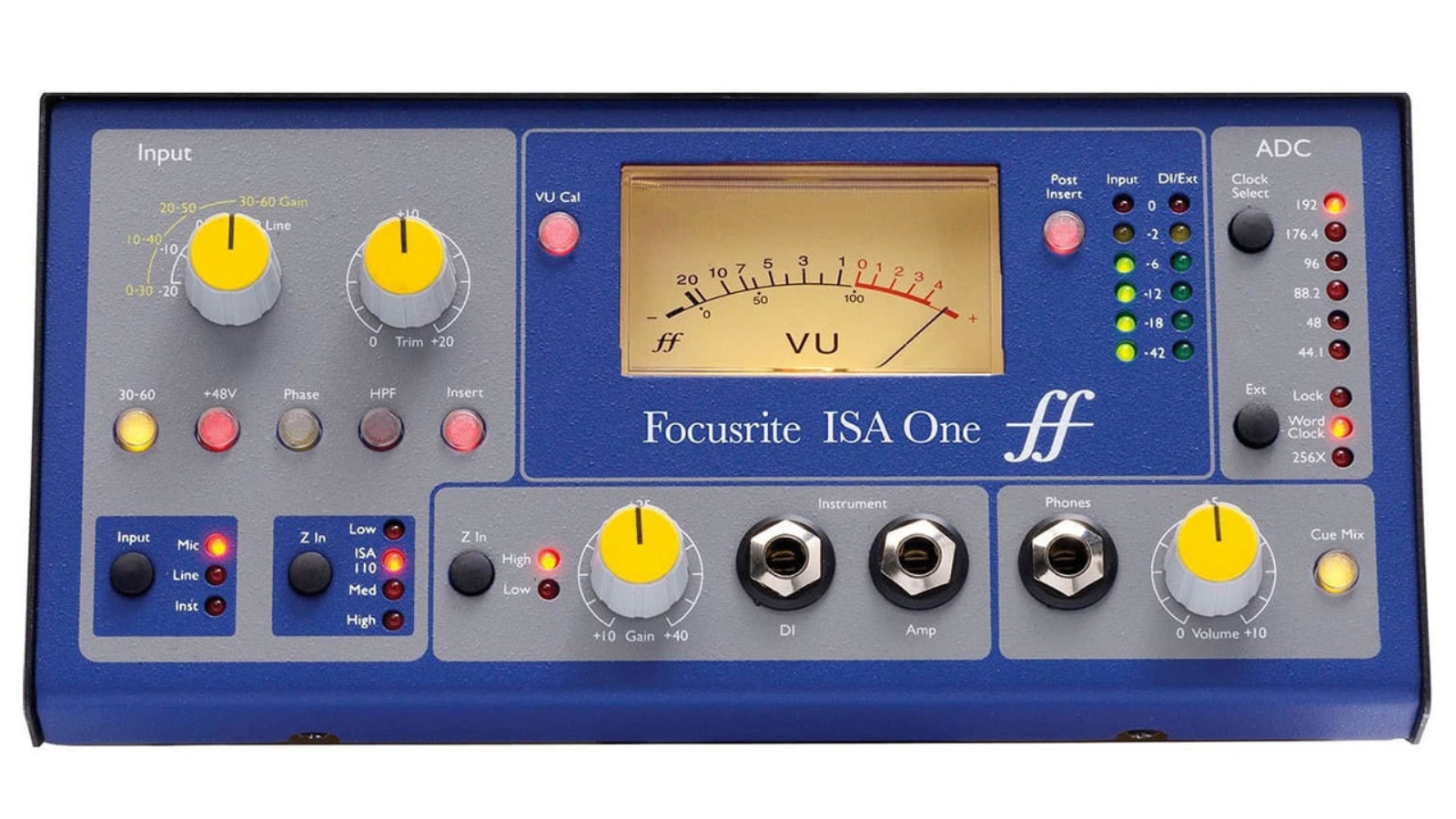
Specifications
Reasons to buy
Reasons to avoid
If you’re looking to make the biggest jump in your recording quality for comparatively little money, the Focusrite ISA One will do the job. It’s not the cheapest mic pre here, but you’re getting a lot of bang for your hard-earned bucks with this incredible preamp and its storied heritage.
It’s a single-channel preamp with balanced XLR and line inputs for microphone and line-level instruments. You also get a separate DI channel with its own impedance switch and gain control, great for running DI guitar or bass signals alongside your regular mic capture. Despite its single-channel structure, there are a lot of routing options available, including an insert for adding your EQ or compressor to the signal path as well as an unbalanced out for re-amping.
The sound of this mic preamp can be summed in a few words, focused and articulate. It sounds far more expensive than it actually is, and it’s miles better than any built-in mic pres on an audio interface. For vocals, the sound is absolutely stellar, even if you’re using an inexpensive condenser microphone. The ability to record DI makes it an excellent choice for guitars and other instruments too. For the money, the Focusrite ISA One is simply superb.
Read the full Focusrite ISA One Mic Pre review

2. DBX 286s
Our expert review:
Specifications
Reasons to buy
Reasons to avoid
For home studios that need great vocals on a budget, pairing a condenser mic with the DBX 286s will give you a sonic palette that should be enough for any use case. Of course, there are many that will say that you should always save your vocal processing for the mix phase, but when you’re working on a budget and time scale, you’ll want to correct any deficiencies before they reach your DAW.
The DBX 286s features pretty much everything you’d want from a vocal channel strip, with a mic preamp, compressor, de-esser, ‘enhancer’ (read: an EQ), and an expander/gate. Ranging from +10dB to +50dB the mic preamp will cover pretty much anything you can throw at it and although there’s no pad control for super-loud sound sources, the 80Hz high pass filter with a steep slope is welcome for reducing low-end rumble.
The compressor is the ‘soft-knee’ type, perfect for vocals, and whilst we probably wouldn’t use the de-esser ourselves, it’ll certainly come in handy for a specific type of vocalist. The ‘enhancer’ is a dual EQ, with the first knob applying an 80Hz boost/250Hz cut. The second knob is more interesting, ‘intelligently’ scanning your audio and applying EQ. Add in a very usable expander/gate, and you’ve got a fully-fledged vocal recording powerhouse for relatively little money.
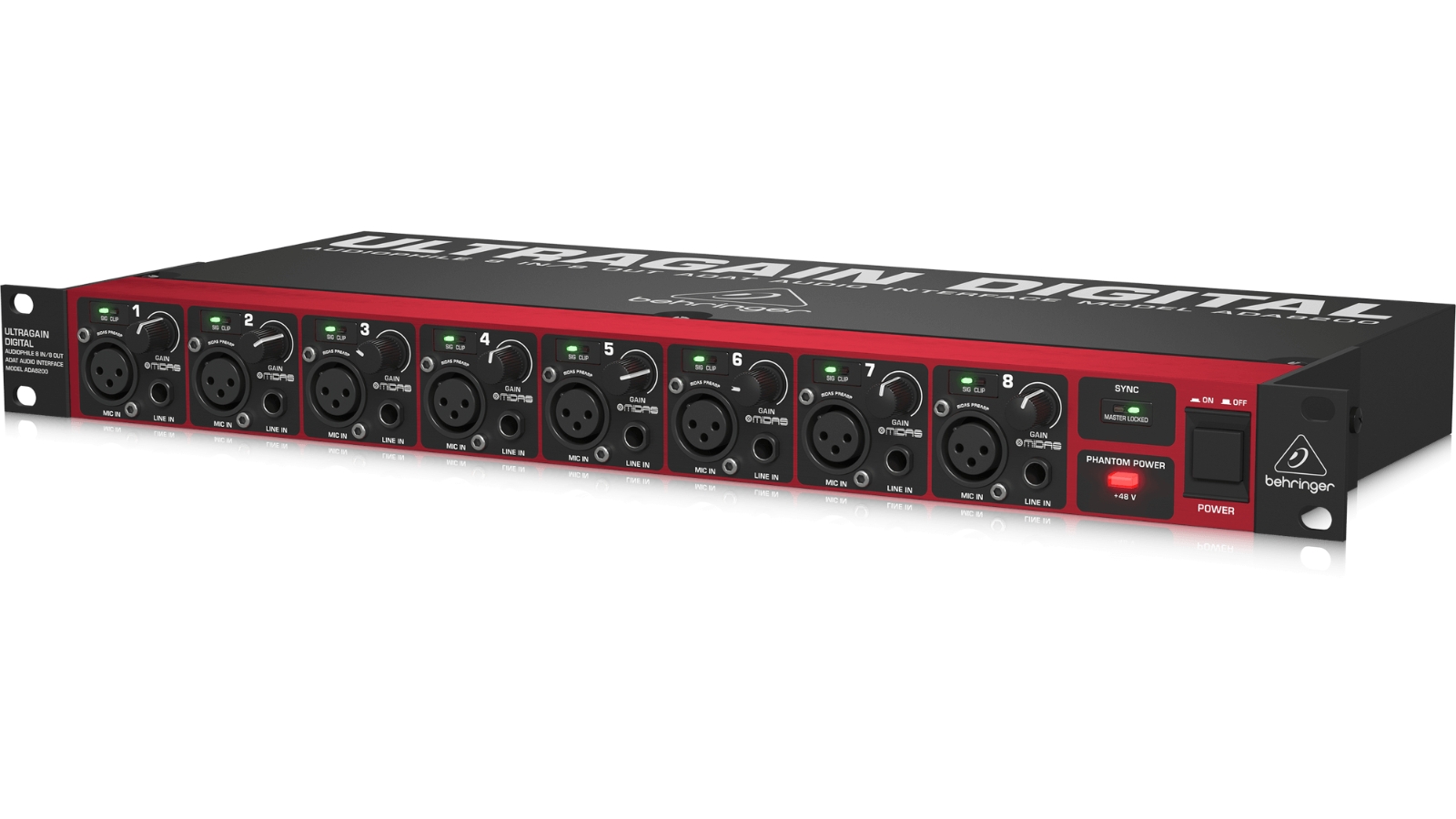
3. Behringer ADA8200
Our expert review:
Specifications
Reasons to buy
Reasons to avoid
If you’re looking to expand the in/out of your existing audio interface, or you need something to multi-mic a drum kit or record a full band with, the Behringer ADA8200 is a brilliant option on a tight budget. Despite their controversial reputation, Behringer makes some top-quality studio and live sound gear, so don’t let the name put you off.
The ADA8200 features 8 inputs with Midas preamps, allegedly derived from the famous Midas Venice console. Phantom power is globally switched and only on the XLR inputs. Handily both the XLR and line inputs are summed all the time, with the line input being padded and mixed with the XLR before being fed into the mic pre.
Getting 8 inputs at this price is pretty incredible really, and the preamps deliver a neutral and clear platform with a low noise floor. It’s not going to massively increase the quality of your recordings over the preamps on your average audio interface, but for traditional band recording on a budget, it’s the logical choice.
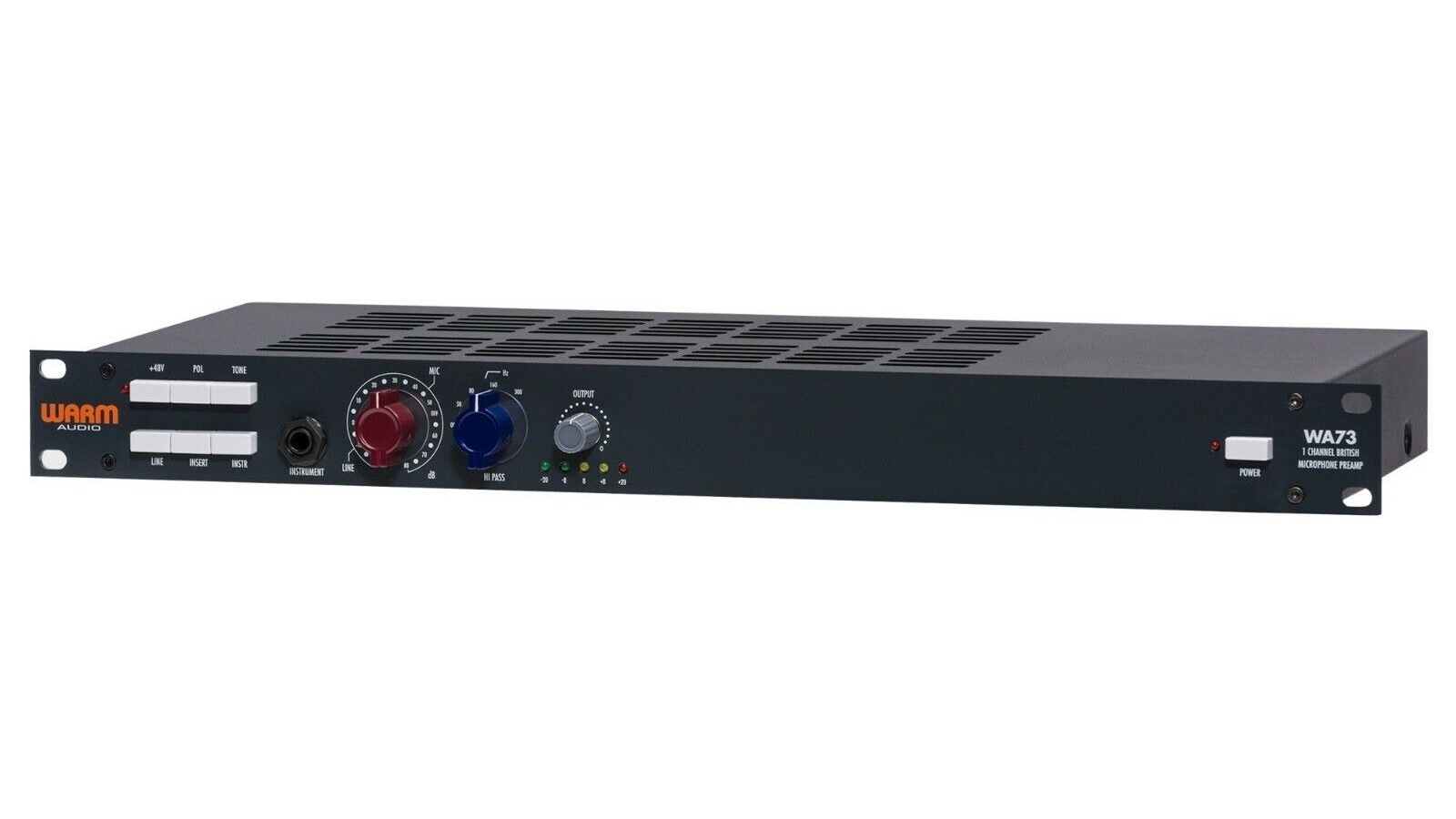
4. Warm Audio WA73
Our expert review:
Specifications
Reasons to buy
Reasons to avoid
If you need more character and gain from your recordings, then look no further than the Warm Audio WA73. As with many modern preamps, it’s inspired by the famous Neve 1073 - a defining factor in the ‘British sound’ of recording in the 70s - but is far more wallet-friendly than the real deal, or any boutique recreation.
It’s a weighty unit with a select amount of controls that are surprisingly powerful. Dual concentric potentiometers on the rotary knobs ensure smooth fine-tuning and handy button controls let you select your input, phantom power, and various other options. The front mic and instrument inputs are mirrored on the rear for more permanent setups and you also get an effects loop for inserting additional modules.
Plugging it in you’ll get that classic Neve sound with its prominent low-mid range and it works wonders on mic’d guitars and vocals. There’s an added smoothing effect with the WA73 that tames transients and adding saturation will enhance the vibe of any solid vocal take. It’s not the cheapest here, but considering the cost of a pro-level mic preamp, this one is exceptional value.
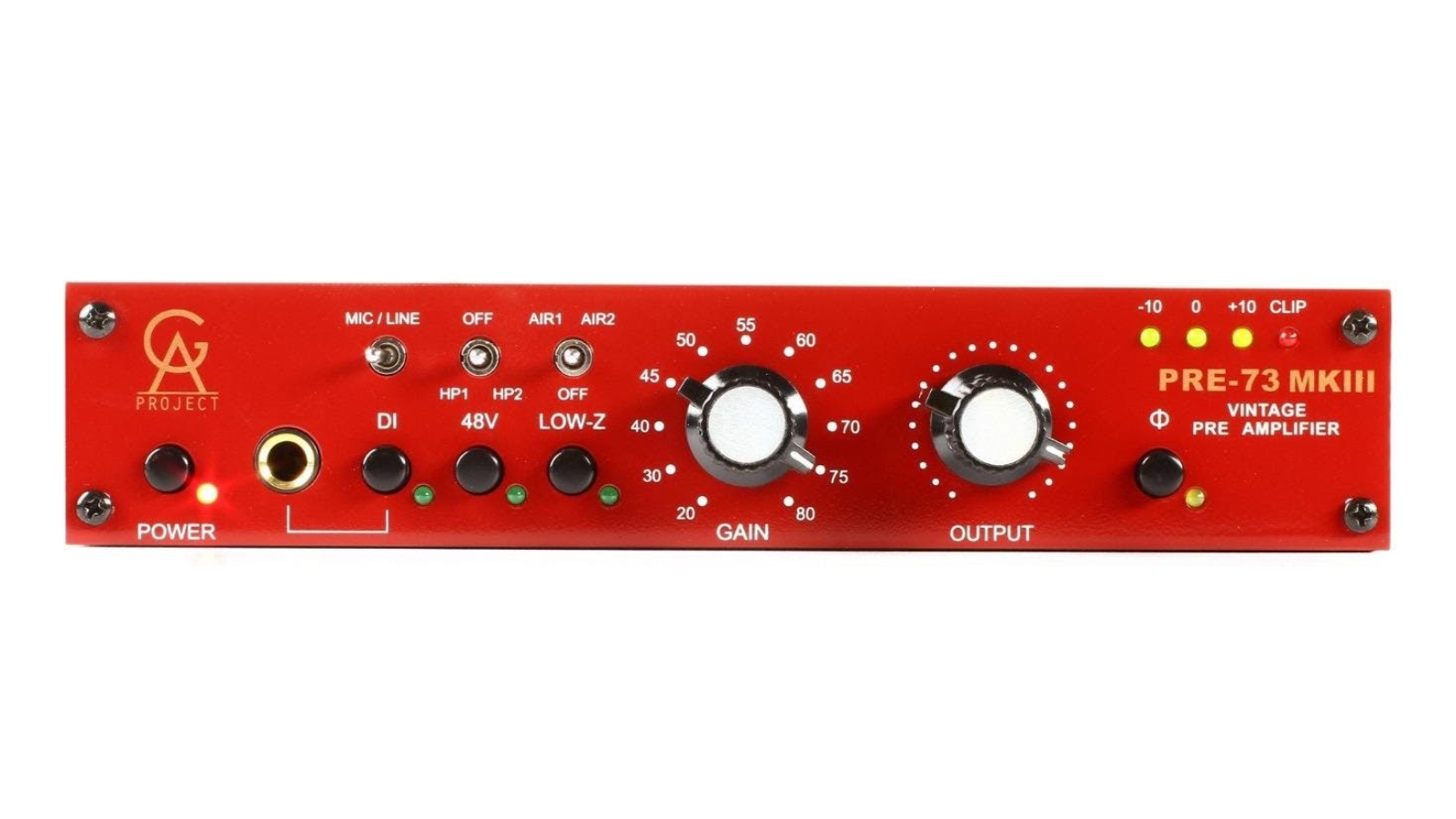
5. Golden Age Project Pre-73 MKIII
Our expert review:
Specifications
Reasons to buy
Reasons to avoid
Another preamp based on the legendary Neve 1073, the Golden Age Project Pre-73 offers a vintage-style sound for producers on a budget. For adding a vintage vibe to your vocals, there are not many that will do it better - particularly at this price point.
The setup here is fairly simple with a single combi XLR/TRS input with a maximum gain of 80dB for the mic input, making it great for ribbon microphones on quiet sound sources. There’s an insert for adding other effects, and a handy four-stage LED meter so you can monitor your signals in real-time.
Bear in mind this isn’t a ‘transparent’ preamp. It’s got a character all of its own, which means that it might not suit every recording situation. That said, if you’re looking to bring your vocals to the front of the mix without smashing the high end, it does the job admirably well. It also works great on guitar cabs, and particularly clean guitar tones, lending a lovely mid-range and smooth highs.

6. Focusrite Scarlett Octopre
Our expert review:
Specifications
Reasons to buy
Reasons to avoid
For adding inputs to your existing setup where you’ve got a bit more budget, the Focusrite Scarlett Octopre is incredible value for money. It’s not as cheap as the Behringer ADA8200, but if you’re able to fork out more money, it's a worthwhile upgrade for your studio setup.
Featuring 8 combi XLR/1/4-inch inputs and 8 1/4-inch outputs the Scarlett Octopre can run all 8 channels at 96kHz, or four channels at 192kHz. Handily two of the inputs are on the front panel for easy access, with the rest on the rear of the unit. Phantom power is switchable only in banks of four, so be careful with those delicate ribbon mics.
For the price, these preamps are amongst the best you can get and will deliver a clean sound without imparting any noticeable character. 5 stage LEDs for each channel ensure that you’re always aware of your levels, and there’s plenty here to deliver top-quality sounding recordings, provided your input source is good!
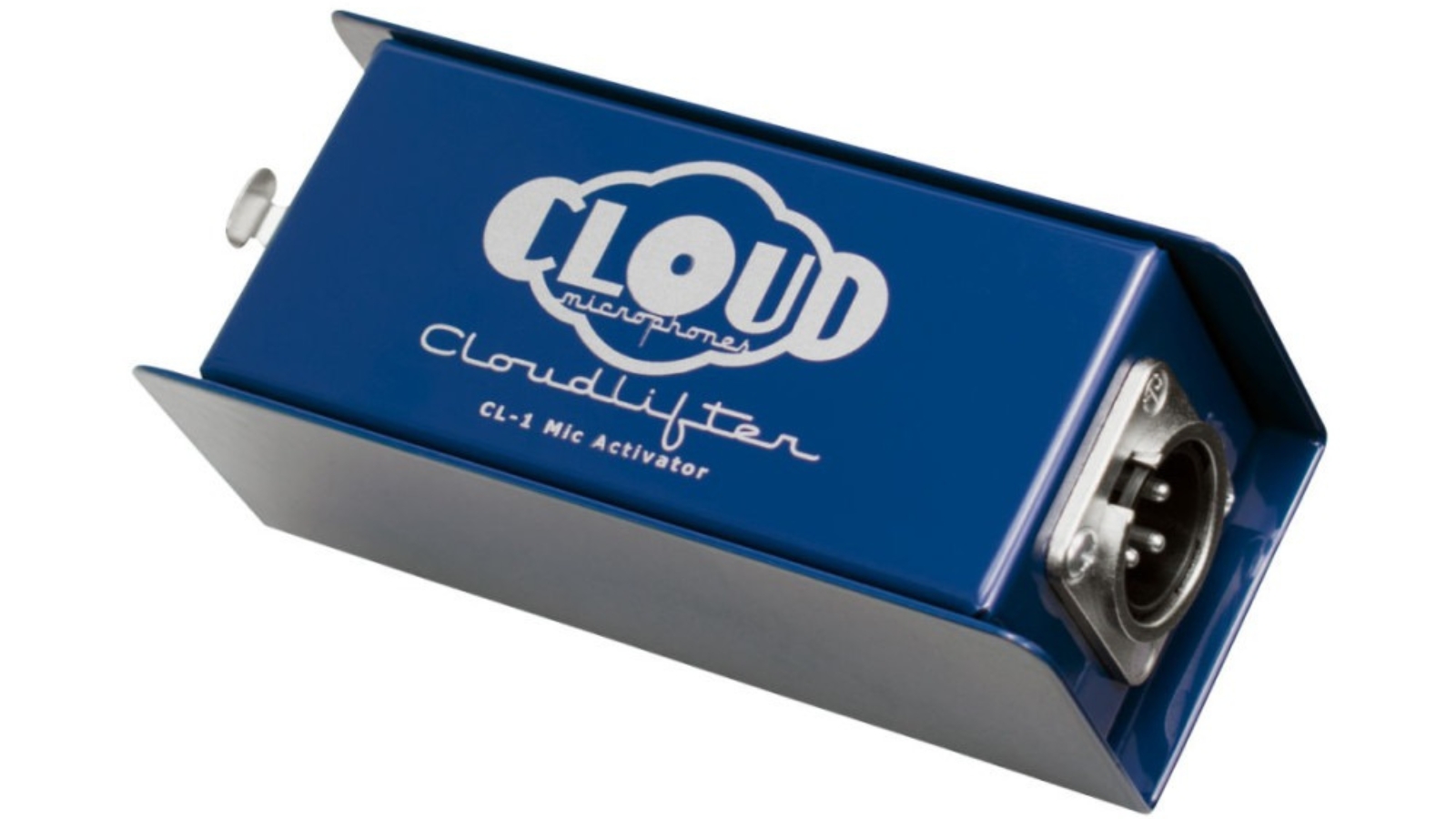
7. Cloudlifter CL-1
Our expert review:
Specifications
Reasons to buy
Reasons to avoid
The Cloudlifter CL-1 is a low-noise preamp with a super simple design that looks more DI-box than mic preamp. Don’t let the aesthetic fool you though, this is a vital studio tool that will ensure you get the best out of low-output microphones and long cable runs.
The simple one-in, one-out XLR design means that anyone can have this up and running in an instant. It’s powered via the phantom power of your interface/desk but doesn’t pass it onto your microphone so that fragile ribbon mic is safe from any voltage spikes. The unit is absolutely rock solid too, so you won’t be replacing it in a hurry.
It doesn’t add anything to the sound of your recording in the same way some vintage-inspired mic pres might do. But you will notice a difference with it in your recording chain. Particularly when boosting quiet sound sources, the Cloudlifter does a fantastic job of bringing the level up - without bringing the digital noise and hiss of your computer and audio interface along with it.
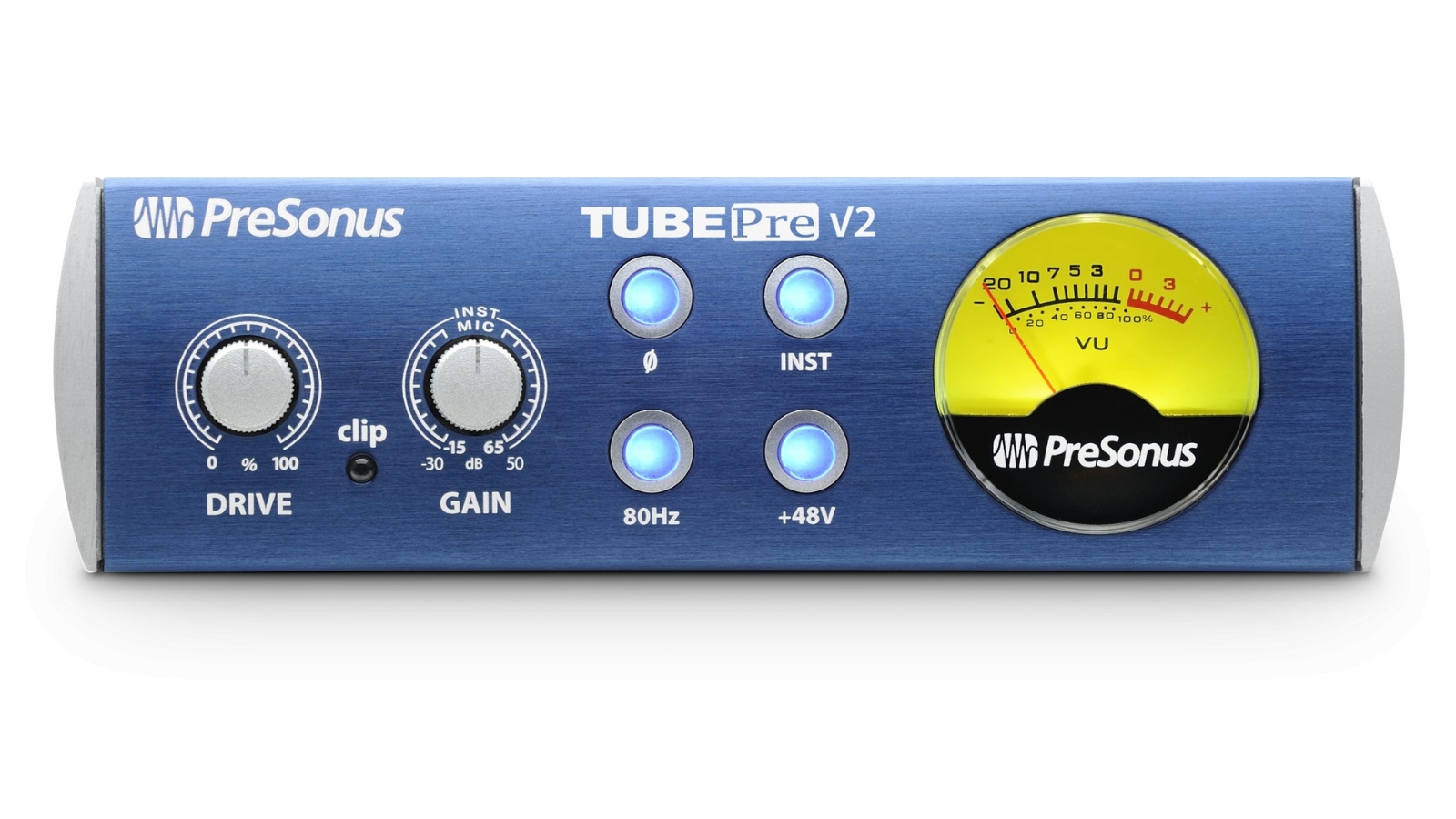
8. PreSonus TubePre V2
Our expert review:
Specifications
Reasons to buy
Reasons to avoid
PreSonus has made something of a habit of quality studio gear for less, and the PreSonus TubePre V2 is the perfect entryway to the world of tube preamps - without laying down insane amounts of cash.
The TubePre can accommodate both mic and instruments with dedicated inputs for each. Switchable phantom power, a -20dB pad, and a polarity switch all make an appearance. You also get separate gain and drive knobs, so you can dictate just how much tube character you want to add to your recording.
Without said tube flavor engaged, the TubePre doesn’t really do anything more than you’d expect of one of its audio interfaces, which is absolutely fine. Add some drive into the equation and you’ll soon hear some added flavor, from a hint of complimentary tone right through to all-out saturation in the higher registers. There’s no hint of harshness in the high-end, adding useful weight to a variety of instruments.
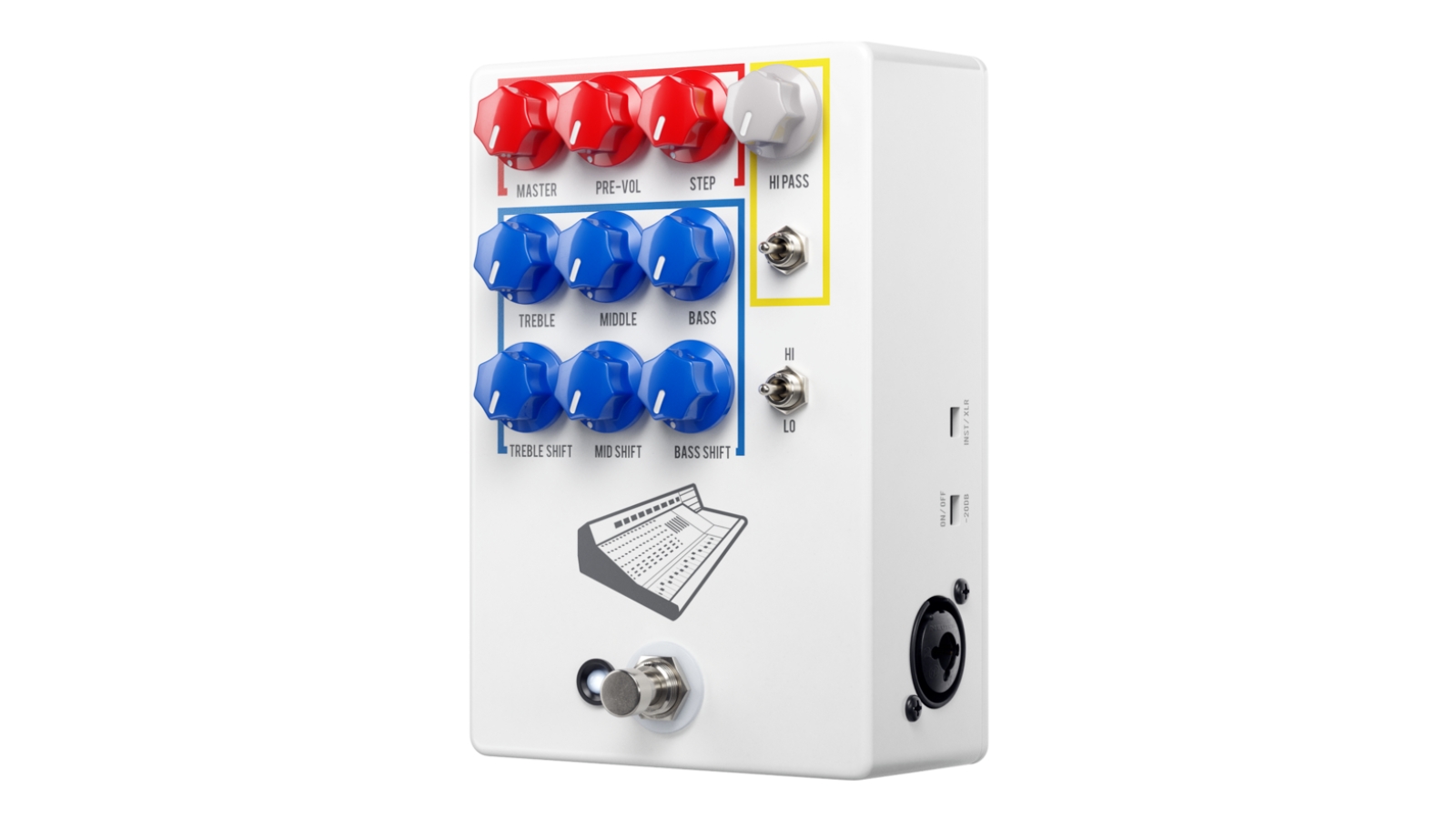
Specifications
Reasons to buy
Reasons to avoid
Whilst it’s not your typical studio mic pre, the JHS Colour Box V2 is a brilliant tool for guitarists recording at home, particularly useful for those using amp sims to get their sound. Part DI, part EQ, and part preamp, it’s all analog circuitry based on a vintage Neve schematic.
With a combo instrument/XLR input and -20dB pad switch the Colour Box is well equipped to handle a variety of recording duties. Use it to mic up your guitar cabinet for extra vintage console flavor, or use it as a way of warming up your DI guitars before you run them through an amp sim. It’ll work on a variety of sources too, but the lack of phantom power means it’s dynamic/ribbon mics only.
Running a DI guitar into it adds significant heft and warmth, with a smoother overall sound, like there’s mild compression being applied. The EQ controls are powerful without ever adding too much mud or shrill high end and onboard distortion lets you add flavor to a DI bass or guitar track, going from gentle right through to fuzz territory. Despite its looks, this isn’t really a stompbox, instead, it’s an amazing direct recording tool for guitarists.
Read the full JHS Colour Box review
Best budget mic preamps: Buying advice

What’s the difference between an audio interface and a mic preamp?
Nowadays there’s little difference between a mic preamp and an audio interface. The majority of interfaces now contain built-in mic preamps, which increase the volume of your source signal to usable levels - particularly useful when dealing with quiet sound sources or low-output microphones.
A mic preamp is a dedicated unit, so they’re usually a lot more powerful than those built into your audio interface. Typically built-in mic preamps will be of the clean and transparent types, whereas dedicated mic preamps will impart their own tonal characteristics on your recorded sounds. which can be desirable when looking for a fuller recorded sound without having to up the gain and potentially introduce more noise to your signal.
Conversely, some microphone preamps also feature A/D conversion, which is a method of converting sounds from analog to digital. This means some mic preamps can be plugged directly into the computer for use that way, but for the most part, you’ll be using a mic preamp to add more inputs alongside your existing audio interface.
Does a mic preamp improve sound quality?
After your recording space, the microphone, and of course the performance itself, the mic preamp is one of the most important aspects of any recording signal chain. Although dependent on the mic pre in question, in most cases, a mic preamp will improve the sound quality of your recordings.
They do this in different ways, however. Some mic preamps offer the clean boost type lift that raises the level of your incoming signal without affecting the tonal character. On the other hand, there are those mic preamps that add their own flavour to your sound, particularly those modeled after vintage preamps and mixing desks.
Mic preamps will not only improve the overall sound of your recordings, but they can enhance the characteristics of cheaper microphones too. Where budgets are tight it’s sometimes better to buy a decent preamp to go with an existing microphone, rather than splurge on that U87 you’ve been lusting after.
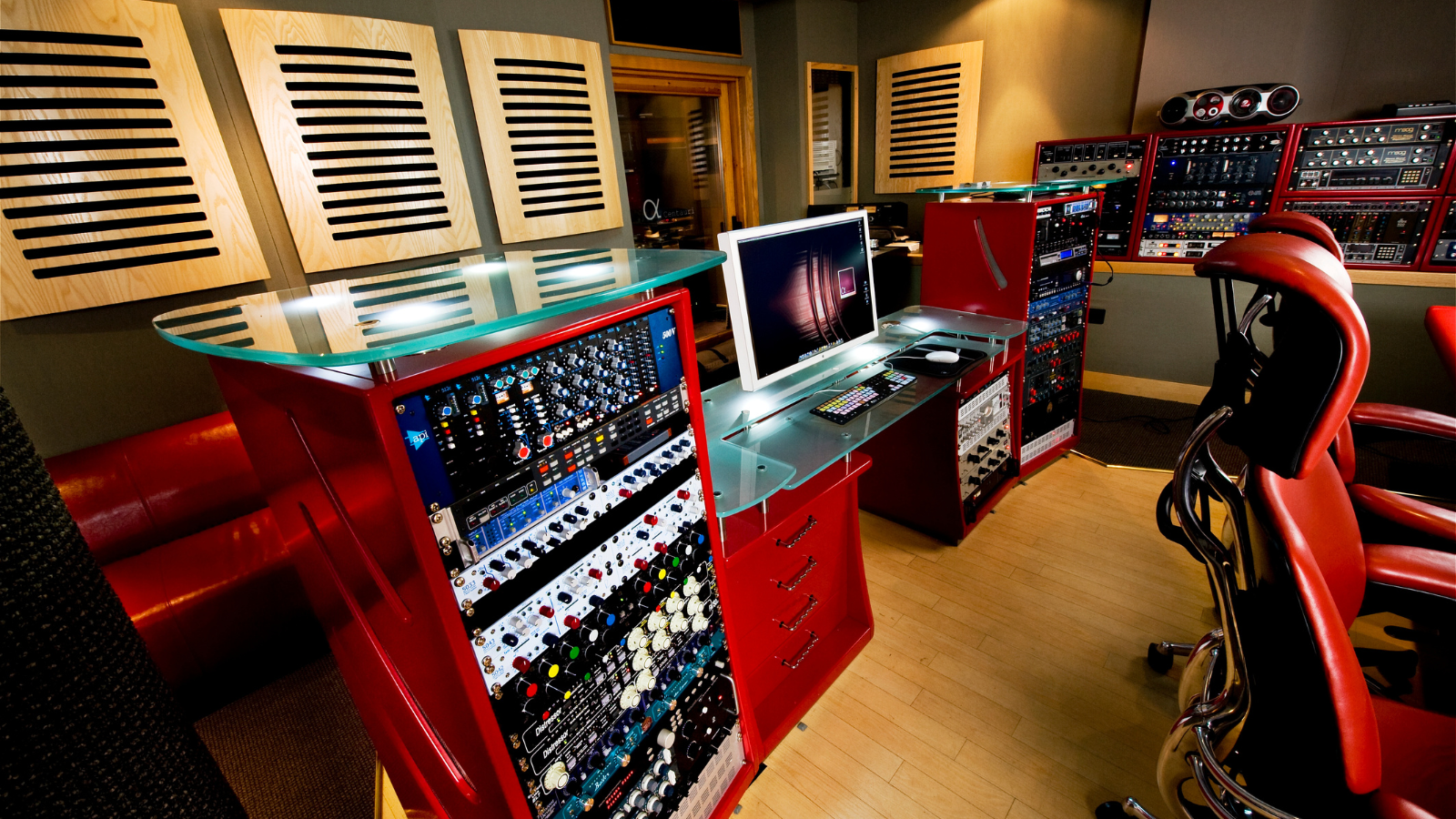
Why are mic preamps so expensive?
Despite the fact that on a component level what you get in a preamp doesn’t cost that much, what you’re actually paying for when it comes to it is the expertise of the engineering team and lots of research and development. Particularly when the mic pre is a recreation of a vintage unit, it takes a lot of experience and ingenuity to plot the correct layout of the analog components required to build a great mic preamp.
Add in the fact that mic preamps aren’t as popular as guitar pedals and you’ll also find another reason that the cost is high. For larger companies like Behringer, the fact they already make money selling many other products also contributes to keeping costs down but for specialist preamp companies this isn’t the case. They’re usually small teams of expert engineers without lots to spend on marketing and branding.
How do I connect my mic preamp?
To get the best out of a mic preamp you will need an audio interface to connect to. Whatever you do, do not connect your mic preamp to the regular microphone input of your audio interface, as you’ll essentially be boosting the signal twice. On the back of your audio interface you will most like have a line input, and this is where you need to connect your mic preamp.
Some audio interfaces will enable connection via ADAT with a TOSLink cable that is widely available from music and tech shops. The connection method will vary depending upon your preamp and audio combination, so it’s always best to refer to the manufacturers advice here to ensure a proper connection.
How we choose products for our buyer's guides
MusicRadar's got your back
At MusicRadar, we have a team of experienced musicians who have tested various bits of recording gear, including many mic preamps. As passionate music lovers, we understand the importance of achieving the right sound and tone in your recordings, and we leverage our expertise gained from using these products in various recording settings to identify the best budget mic preamps for our readers.
To compile our list of products, we combine practical experience, user feedback, and in-depth discussions with our editorial team to reach a consensus. We take into account factors such as pricing, features, sound quality, and ease of use to ensure that we showcase the very best budget mic preamps available on the market.
As recording enthusiasts, we appreciate the value of having the right equipment to create the perfect sound. Therefore, we are committed to providing reliable and knowledgeable recommendations to help our readers find the ideal budget mic preamp to suit their specific needs and preferences. Our ultimate aim is to assist musicians and producers in unlocking their full potential by elevating their sound with the best recording gear out there.
Related buyer's guides
- Our pick of the best microphones for recording
- The best cheap microphones available today
- Best vocal mics for the studio and stage
- Cut the cord with the best wireless microphones
- Make yourself heard with the best XLR microphones
- Work the crowd with the best live vocal microphones
Want all the hottest music and gear news, reviews, deals, features and more, direct to your inbox? Sign up here.

Matt is a Junior Deals Writer here at MusicRadar. He regularly tests and reviews music gear with a focus on audio interfaces, studio headphones, studio monitors, and pretty much anything else recording-related. Matt worked in music retail for 5 years at Dawsons Music and Northwest Guitars and has written for various music sites including Guitar World, Guitar Player, Guitar.com, Ultimate Guitar, and Thomann’s t.blog. A regularly gigging guitarist with over 20 years of experience playing live and producing bands, he's also an alumnus of Spirit Studios, where he studied studio engineering and music production.